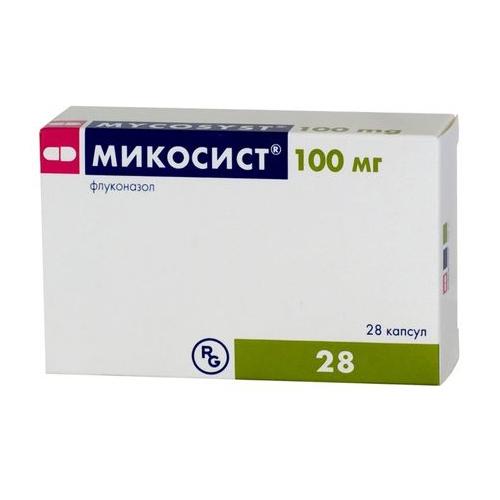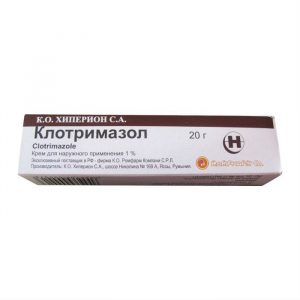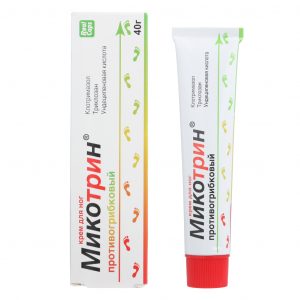Description
Latin name
Mycosyst
Packing
28 pcs.
Indications
cryptococcosis – cryptococcal meningitis cryptococcal infections of the lungs and skin cryptococcal sepsis prevention of relapses of cryptococcosis in AIDS patients with organ transplantation or other cases of
immunodeficiency, generalized candidiasis, candidiasis, and candida infection respiratory and urinary tract), incl. in patients receiving a course of cytostatic or immunosuppressive therapy, as well as in the presence of other factors predisposing to the development of candidiasis, treatment and prevention of
candidiasis of the mucous membranes of the oral cavity, including atrophic candidiasis of the oral cavity associated with wearing dentures, pharynx, esophagus and non-invasive bronchopulmonary infections, candiduria
genital candidiasis – vaginal (acute or chronic relapsing form) candida balanitis (capsules)
prevention of fungal infections in patients with malignant neoplasms who are predisposed to such infections as a result of chemotherapy with cytostatics or radiation therapy prevention of recurrence of oropharyngeal candidiasis in patients with oropharyngeal candidiasis skin, including mycoses of the trunk, inguinal region
capsules: pityriasis versicolor, onychomycosis, foot mycoses
deep endemic mycoses, including coccidioidosis, paracoccidioidosis and histoplasmosis in patients with normal immunity.
Contraindications
hypersensitivity to fluconazole, other components of the drug or other structurally similar azole compounds
simultaneous use of terfenadine (against the background of continuous administration of fluconazole at a dose of 400 mg / day or higher) and cisapride, as both drugs lengthen the QT interval and increase the risk of severe cardiac arrhythmias
simultaneous use of astemizole
lactose intolerance, lactase deficiency, glucose-galactose malabsorption (capsules)
lactation period.
Caution: hepatic and / or renal failure rash on the background of fluconazole in patients with superficial fungal infection and invasive / systemic fungal infections, simultaneous use of fluconazole with rifabutin or other drugs metabolized by the cytochrome P450 system, simultaneous use of terfenadine and fluconazole 400 mg / day potentially proarrhythmogenic conditions in patients with multiple risk factors (organic heart disease, electrolyte disturbances deleterious balance, concomitant use of drugs, causing arrhythmias) patients with intolerance to acetylsalicylic acid pregnancy.
Use during pregnancy and lactation
Use of fluconazole during pregnancy is only possible if the potential benefit to the mother outweighs the risk to the fetus.
Fluconazole is determined in breast milk at the same concentration as in plasma, so its administration during lactation is contraindicated.
Composition
1 capsule contains:
Active ingredient:
fluconazole 100 mg
Excipients:
silicon dioxide colloidal
magnesium stearate
talc
povidone
starch corn
lactose anhydrous.
Side effects of the
Digestive system: nausea, vomiting, diarrhea, flatulence, abdominal pain, taste change, impaired liver function (hyperbilirubinemia, increased activity of hepatic transaminases, alkaline phosphatase, jaundice, hepatitis, hepatocellular necrosis, including fatal).
From the nervous system: headache, dizziness, cramps.
From the hemopoietic organs: leukopenia, thrombocytopenia, neutropenia, agranulocytosis.
Allergic reactions: skin rash, erythema multiforme exudative (including Stevens-Johnson syndrome), toxic epidermal necrolysis (Lyell’s syndrome), anaphylactoid reactions (including angioedema, facial edema, urticaria, pruritus), bronchial asthma (more often with intolerance to acetylsalicylic acid).
On the part of the CCC: an increase in the duration of the QT interval on the ECG, ventricular fibrillation / flutter.
Other: impaired renal function, alopecia, hypercholesterolemia, hypertriglyceridemia, hypokalemia.
Drug Interaction
Anticoagulants. Patients receiving fluconazole and indirect coumarin anticoagulants need careful control of PV as it may increase.
Sulfonylureas. Fluconazole, when taken at the same time, may prolong the T1 / 2 derivatives of sulfonylureas, so when combined, consideration should be given to the possibility of hypoglycemia.
Phenytoin. Concomitant administration of fluconazole and phenytoin may be accompanied by a clinically relevant increase in the concentration of phenytoin, which requires a reduction in its dose.
Rifampicin. When concurrent administration of rifampicin and fluconazole decreases Cmax and T1 / 2 of the latter, therefore, if necessary, the combined dose should increase the dose of fluconazole.
Rifabutin. The combined use of fluconazole and rifabutin is accompanied by an increase in serum concentration of the latter, the development of uveitis is possible.
Cyclosporine. When fluconazole and cyclosporine are co-administered, it is recommended to control the concentration of the latter as it may increase.
Terfenadine. Given the occurrence of serious, life-threatening arrhythmias in patients receiving antifungal agents – azole derivatives in combination with terfenadine, their joint reception is contraindicated.
Cisapride. With concomitant administration of fluconazole and cisapride, adverse events from the heart have been reported, including ventricular tachycardia paroxysms. Simultaneous administration is contraindicated.
Zidovudine. When combined with fluconazole, it is possible to increase the concentration of zidovudine in the blood plasma. Patients taking this combination should be observed to identify side effects of zidovudine.
Theophylline. Fluconazole administration leads to a decrease in the average clearance rate of theophylline from the blood plasma, therefore increasing the risk of the toxic effect of theophylline and its overdose.
Midazolam. Concomitant use of fluconazole and midazolam leads to a significant increase in the latter’s plasma concentration and the risk of psychomotor reactions.
Hydrochlorothiazide. Concomitant administration of fluconazole and hydrochlorothiazide increases the concentration of fluconazole in blood plasma by 40%.
Tacrolimus. Concomitant administration of fluconazole and tacrolimus increases the serum concentration of the latter, which increases the risk of nephrotoxicity.
Caution should be exercised when using fluconazole in patients receiving other drugs metabolised by the cytochrome P450 system.
Overdose
Symptoms: nausea, vomiting, diarrhea in severe cases, convulsions, hallucinations, paranoid behavior may occur.
Treatment: symptomatic (gastric lavage, forced diuresis, hemodialysis). After a 3-hour hemodialysis session, the concentration of fluconazole in the blood plasma decreases by about 50%.
Storage conditions
At a temperature of 15 30 ° C.
Expiration
5 Chron
Active ingredient
Fluconazole
pharmacy leave terms without a prescription
Dosage Form Drug
form
capsules




